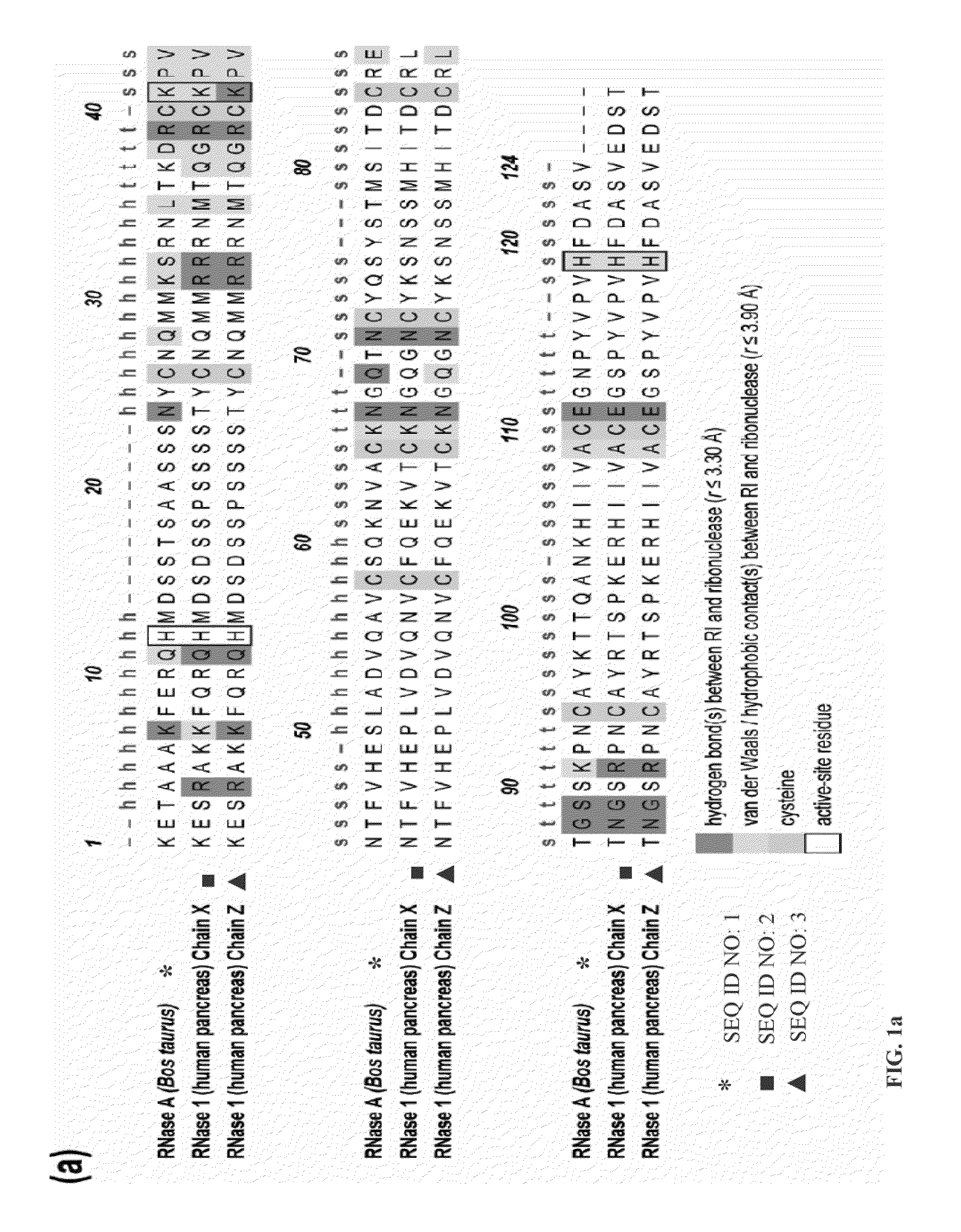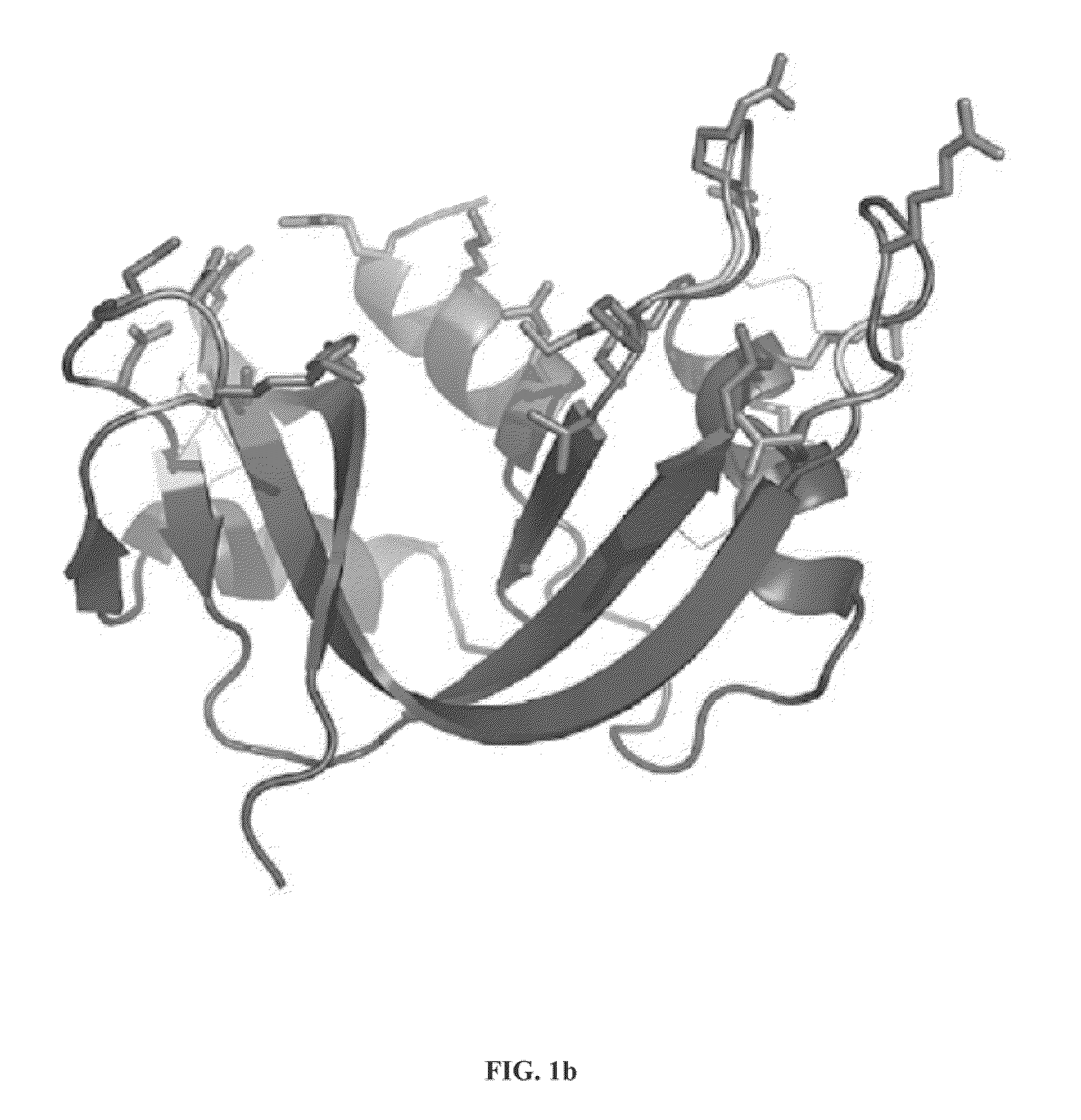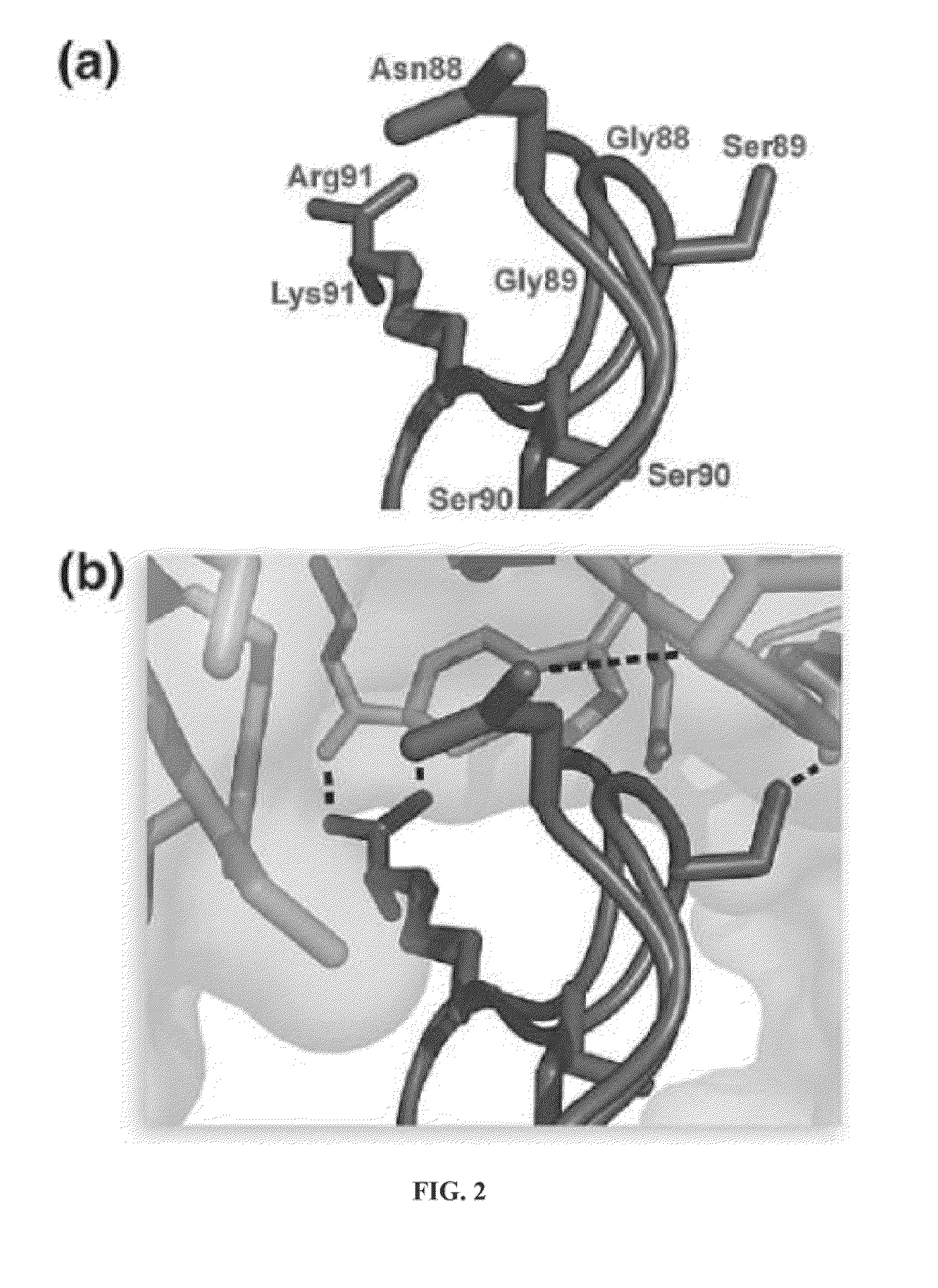Cytotoxic ribonuclease variants
a cytotoxic ribonuclease and variant technology, applied in the field of cytotoxic ribonuclease variants, can solve the problems of dose-limiting renal toxicity and allergenic issues, and limit the suitability of onc as a chemotherapeutic, and achieve enhanced cytotoxic activity, reduce binding affinity for hri, and retain native ribonucleolytic activity
- Summary
- Abstract
- Description
- Claims
- Application Information
AI Technical Summary
Benefits of technology
Problems solved by technology
Method used
Image
Examples
examples
1. Experimental Overview
Design of RNase 1 Variants
[0052]In general, it is understood by those skilled in the art that the equilibrium dissociation constant (Kd) of a protein complex is governed by the intermolecular factors influencing the rate of association (kon) and dissociation (koff). The rate of dissociation is influenced by factors that act over short distances, including van der Waals interactions, hydrogen bonds, hydrophobic interactions, and salt bridges. The rate of association, however, depends primarily on diffusion but can be increased through Coulombic electrostatic forces. The majority of long-range electrostatic forces destabilize protein-protein interactions due to a large energetic penalty to desolvate the charged amino acids. However, when speed is a necessity, the rate of association and consequently the affinity of a complex can be increased by optimizing the electrostatic energy.
[0053]In designing proteins to have lower affinity for their interacting protein p...
PUM
| Property | Measurement | Unit |
|---|---|---|
| RI | aaaaa | aaaaa |
| RI | aaaaa | aaaaa |
| pH | aaaaa | aaaaa |
Abstract
Description
Claims
Application Information
 Login to View More
Login to View More - R&D
- Intellectual Property
- Life Sciences
- Materials
- Tech Scout
- Unparalleled Data Quality
- Higher Quality Content
- 60% Fewer Hallucinations
Browse by: Latest US Patents, China's latest patents, Technical Efficacy Thesaurus, Application Domain, Technology Topic, Popular Technical Reports.
© 2025 PatSnap. All rights reserved.Legal|Privacy policy|Modern Slavery Act Transparency Statement|Sitemap|About US| Contact US: help@patsnap.com



